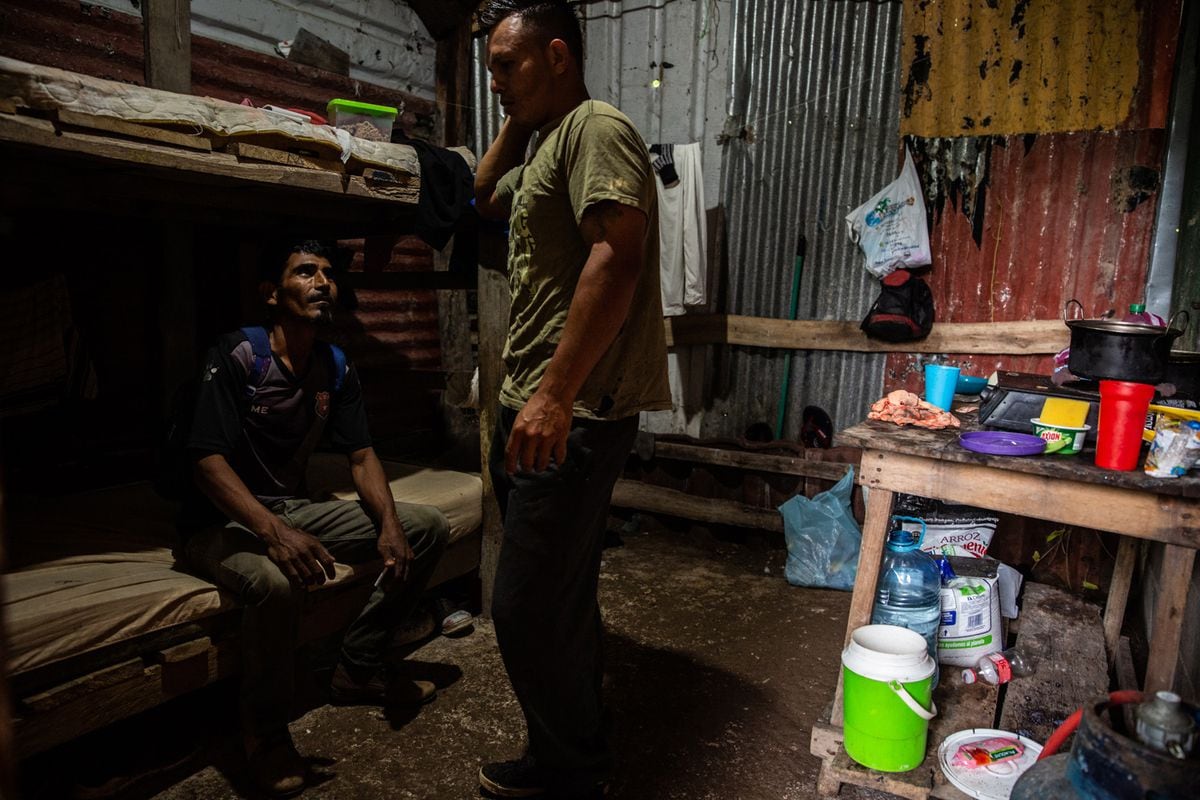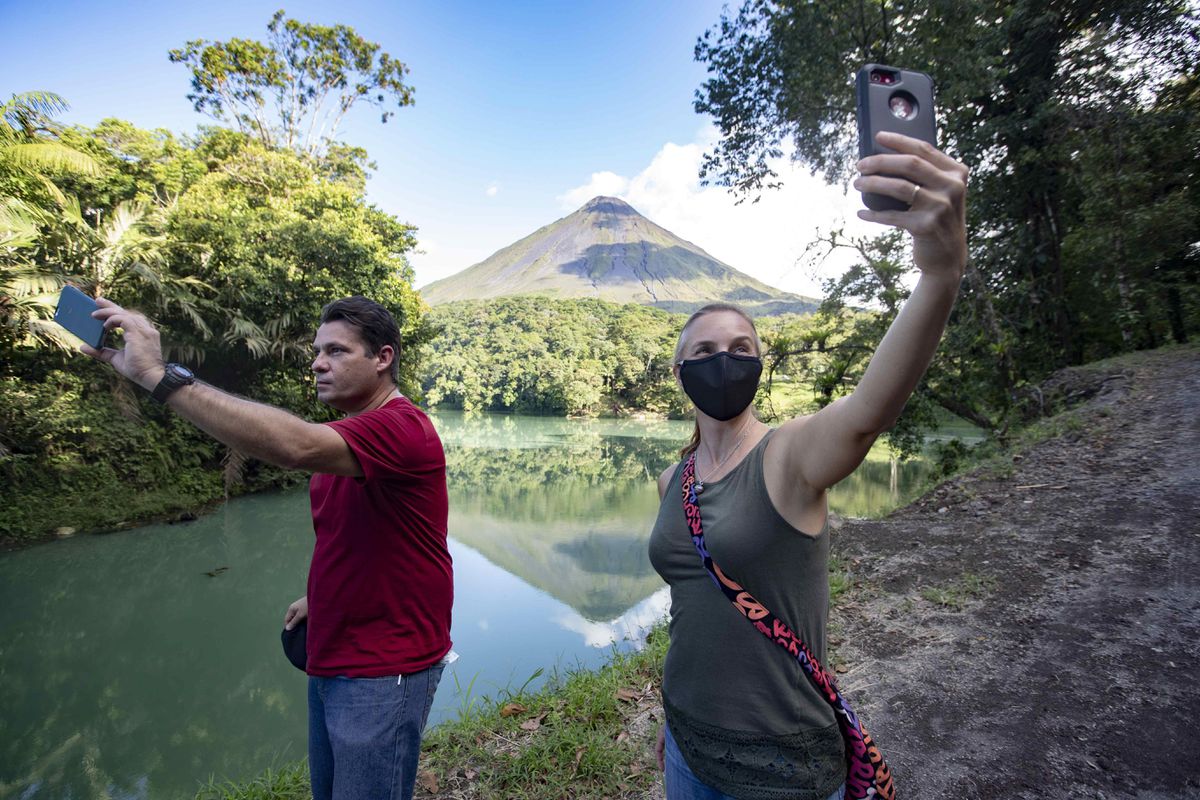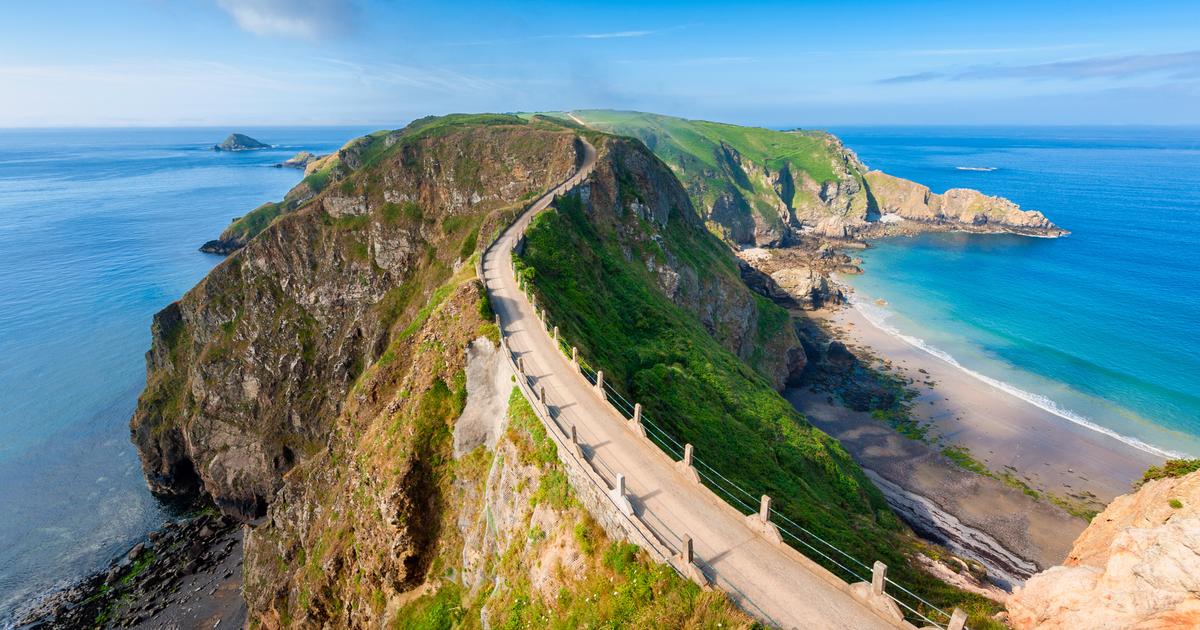Almost overnight, Natalie Harker saw how the rent for her house on the beach in Santa Teresa (Cóbano, Costa Rica) increased from 375 euros to 844 (125%).
The old fishing village located in the northeast of the country, where this 38-year-old Colombian has lived for the last eight years, had been one of the favorite destinations for international tourism for years.
In 2016, an article in
The New York Times
He described it as "the next Tulum" for "its virgin beaches and delicious seafood."
But the covid-19 pandemic accentuated the arrival of European and North American emigrants, who sought to establish themselves in idyllic paradises as investors or who could work from anywhere in the world where they had an Internet connection.
As a result, the cost of living in this surfing town on Costa Rica's Pacific coast has skyrocketed, displacing local residents and Latin American workers to other municipalities or to cheaper housing.
Santa Teresa is a small beach area in the northeast of Costa Rica.
Since the early 2000s, it has been a strategic point for surfers due to its unique waves throughout the year and in the last five years it has seen an explosion of luxury tourism.Mauricio Morales
Some tourists and residents gather at a beachfront bar to watch the sunset, one of the main attractions of the small beach town of Santa Teresa, on the northern Pacific coast of Costa Rica.
A locally produced beer in one of these bars can cost between five and eight euros.Mauricio Morales
Minimarkets and supermarkets offer a wide variety of products, local and imported.
Compared to the central zone of Costa Rica, prices have increased and, for example, a kilo of chicken breast can cost between six and nine euros. Mauricio Morales
The restaurants in Santa Teresa have a range of "gourmet" and international food with prices ranging between nine and 28 euros in low season. Mauricio Morales
One of the cafes and restaurants on the main road in Santa Teresa, often owned by members of the Israeli community. Mauricio Morales
Soda, a popular Costa Rican restaurant, is one of the few businesses run by Costa Ricans and offers casado, a popular dish consisting of rice, beans, salad and animal protein (fish, beef, chicken or pork) for around six euros.
It is a regular place for some of the foreign and local workers of Santa Teresa.Mauricio Morales
Natalie Harker is Colombian.
She works in the tourism services sector and has seen a significant increase in rents in Santa Teresa.
She pays 800 euros for a one-bedroom house in both high and low season.
Elsewhere, homeowners double or triple the cost of rent, forcing renters to look for options on the outskirts of town. Mauricio Morales
Nicaragua is one of the largest exporters of migrants to Santa Teresa.
They are the workforce that builds luxury villas and tourist real estate projects.
A migrant worker can earn between 18 and 23 euros a day for 10 hours of work and pay 121 for a shared room of 10 square meters and without a bathroom on the outskirts of Santa Teresa.
These accommodations, like the one that appears in the image, are popularly known as cuarterías.Mauricio Morales
Four Nicaraguan families share a house in this cuartería.
The spaces are only divided by curtains.Mauricio Morales
A Nicaraguan migrant worker, at a construction site near Santa Teresa beach.
With the rise of tourism, real estate projects have expanded to nearby areas.Mauricio Morales
Several Nicaraguan workers travel in the back of construction trucks to the works in which they work. Mauricio Morales
Women and men, mostly Nicaraguan migrants, queue to catch the few buses that pass from Las Brisas, a migrant neighborhood, that will take them to their jobs in construction and cleaning services. Mauricio Morales
One of the main bus stops in the Las Brisas neighborhood is also the only garbage collection point in the entire area. Mauricio Morales
Some residents and tourists often use quads, motorcycles and 4x4 SUVs to get around Santa Teresa and its surroundings.
Sound and visual pollution is added to that of human waste.
The town lacks a sewage system, and houses, hotels, and businesses often use septic tanks or dump their garbage on the land, which ends up in the ocean.Mauricio Morales
Valerya Sztein is an Argentine migrant who has managed to open a lingerie store.
This community is another of the main ones in Santa Teresa and they usually work in mid-level or managerial positions in the tourism sector or are business owners. Mauricio Morales
Efraín Díaz is a Nicaraguan who works in construction in Santa Teresa and has lived in Costa Rica for more than 20 years.
His living conditions remain almost the same as when he arrived.
He lives in a small metal shack with his partner and pays about 122 euros in rent.
He earns a month, like other construction workers, between 660 and 942, and works 60 hours a week in six days. Mauricio Morales
A luxury villa with views of the sea directly overlooks the soccer field, one of the few public places for the sports and leisure meeting of the community of migrant workers in Santa TeresaMauricio Morales
Soccer is one of the main sports that Costa Ricans and Nicaraguans have in common.
Efraín Díaz uses worn-out soccer balls for his “Coyotes” club, where he trains children of different categories, most of them daughters and sons of Nicaraguan migrant workers, like himself.
All of his work is voluntary and depends on donations. Mauricio Morales
According to a report by the United Nations Development Program (UNDP), 9% of the population of Costa Rica, a country of some five million inhabitants, are migrants.
The country's immigration policies allow visa-free entry to citizens of most European and North American countries for a maximum of 90 days.
There are no restrictions for re-entry with a tourist visa, which allows many, who do not regularize their residence, to enter and leave to renew their stay.
The largest community is that of Nicaraguans (66%), although there is also a large Argentine community and, finally, an Israeli population.
“Here the Europeans, the North Americans and the Israelis are the owners of the town;
Argentinians and Ticos [popular name of Costa Rica] work in hospitality,
Nicaraguan Efraín Díaz, 39, lives in the Las Brisas neighborhood, near the Santa Teresa beach, where most of the migrants who work as laborers in the construction of luxury villas and houses for tourism settle in substandard housing. that are built throughout the year.
At the age of seven he had started selling candy in his native Nicaragua, after being orphaned.
His godfather collected some money and sent him to Costa Rica at the age of 11, on a journey that forced him to walk for three days through the mountains and cross the Costa Rican border irregularly.
Like most Nicaraguans, he got a job as a coffee picker and still works there today.
He pays about 122 euros in rent and earns between 660 and 942 euros a month in working hours that are, like many of his compatriots,
eight to 10 hours a day, six days a week.
This is the only way to send money to their families.
Natalie Harker, a migrant worker from Colombia, has seen her rent go up from 375 to 844 eurosMauricio Morales
run away from town
Valerya Sztein, 39, was luckier.
She migrated from Argentina and is a publicist by profession.
When she arrived in Santa Teresa two years ago, “burned out” by the speed of life in the city and the economic difficulties of her country, she began as an employee in a business run by another Argentine.
But she now owns her own lingerie store.
She sees this place as a paradisiacal place where "since there isn't much to do, bonds are encouraged and getting together with friends to cook and play the guitar."
But not all Argentines have been able to undertake in Santa Teresa.
Generally, they work in the hospitality industry, often as waiters, in establishments run by Israelis, who have found in paradise - as portrayed by the Haaretz newspaper - the opportunity to build prosperous businesses.
Housing crisis and job insecurity
Gabriela Merino, a 38-year-old Costa Rican, has been living in Santa Teresa for 15 years and during this time she has seen how the residents leave for the outskirts, where prices are somewhat cheaper, in order to survive.
In addition, during the pandemic and the months after, she saw an unsustainable rise in the cost of living.
In most coastal areas of the country, the prices of basic foods are higher than those in the interior of the country.
A kilo of chicken breast costs between six and nine euros.
A local beer at the beach bars to watch the sun go down is eight.
If the Nicaraguans leave here, Costa Rica ends, because they are the strong workforce
Álvaro Gil, Colombian migrant
The cost of housing has also skyrocketed.
A one-bedroom apartment, with basic services —one of the few that are available in high season (December to April)— costs, with a bit of luck, between 1,000 and 1,500 euros per month, while the minimum wage in Costa Rica has about 480. However, migrants who have not regularized their situation or who do not have a work permit do not have access to employment contracts or social benefits, which is why many waiters depend on tips to be able to survive.
Francisco Rodríguez is a 24-year-old Nicaraguan who has been a security guard in Santa Teresa for four years.
He also lives in Las Brisas and shares a space of no more than 100 square meters with four other families.
A fine curtain separates the area into five, while the kitchen and bathroom are for common use.
With what he earns, he says, he has no savings left to send to his relatives.
“I work for a living”, he laments himself.
Even so, the situation can be worse: there are many migrants who are forced to live in cuarterías, a shared room that, on many occasions, lacks drinking water.
In Costa Rica the minimum wage is 480 euros, while in Santa Teresa renting a one-bedroom apartment costs between 1,000 and 1,500 euros
Environmental impact
One of the biggest problems is the environmental impact.
The high increase in people living temporarily in Santa Teresa has stretched the area's cleaning services to the limit and it is common to find piles of garbage bags on the only street that crosses the town.
The little government control there is in the management of wastewater around the construction of luxury villas, houses, restaurants and hotels has aggravated the environmental footprint in the area.
One of the main bus stops in the Las Brisas neighborhood is also the only garbage collection point in the entire area. Mauricio Morales
For Carolina Chavarria, director of Nicoya Waterkeepers, there is a lack of individual responsibility in caring for the environment.
“We cut down all the trees because we want a view of the sea, and then they complain that there are landslides and that everything is dirty and there is a lot of sediment in the sea”, she complains.
Through the organization they have promoted different initiatives that monitor environmental impact and educate residents and business owners in the area on waste management.
The tourist projection of Santa Teresa has meant that hardly any investment has been made in the creation of public and meeting spaces.
One of them is the soccer field, —where some of the luxury villas with sea views are located.
It is the place where Efraín Díaz trains the children, mostly Nicaraguans, and encourages activities and meeting places for the community through the Coyote Club School.
“I support children at heart, because I did not have parents and I suffered a lot.
There were people who discriminated against me and others didn't, that's why I want to support them, ”he reflects.
“The community is segregated by ethnic groups and Nicaraguans don't mix with anyone,” reflects Merino.
It is almost impossible to see them with a beer on the beach or surfing.
They leave Las Brisas very early to work, crowding together to get on the few buses that take them to their jobs or return from them in the back of a truck to the precariousness of their homes.
“If the Nicaraguans leave here, Costa Rica ends, because they are the strong workforce,” adds Álvaro Gil, a 60-year-old Colombian who arrived in Santa Teresa at 35.
You can follow PLANETA FUTURO on
,
and
, and subscribe
here
to our 'newsletter'
.




/cloudfront-eu-central-1.images.arcpublishing.com/prisa/CY2A26MEDVGSFEWPX5DBVG5BFQ.jpg)










